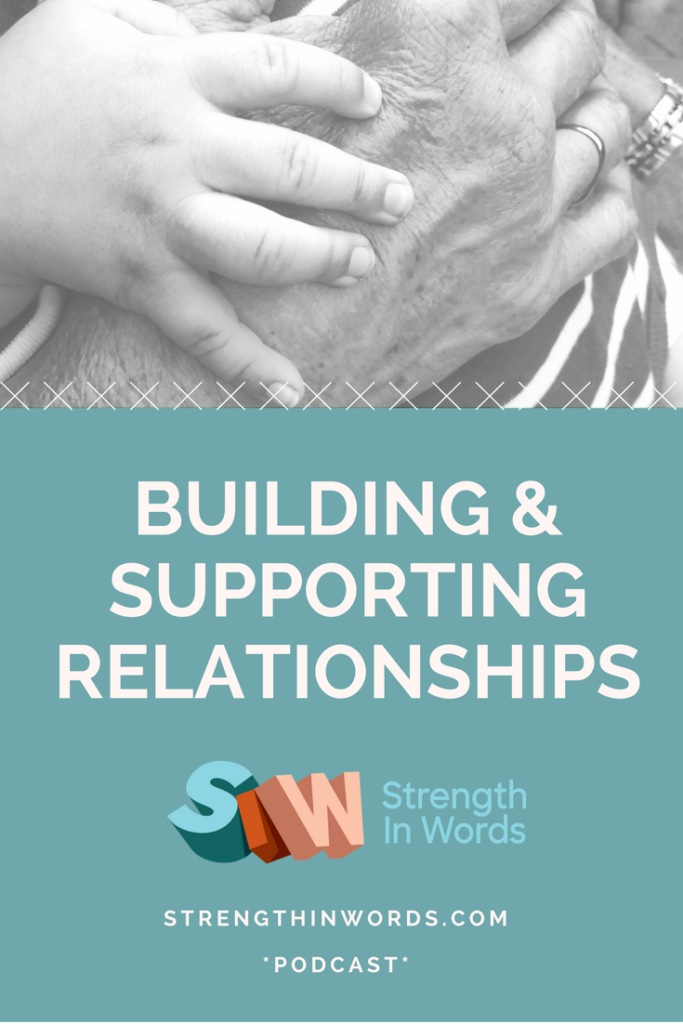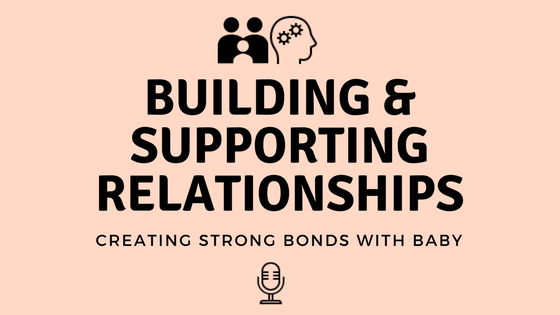How do we build relationships (and support relationship-building) with our infants and toddlers?

In this episode of Learn With Less, Ayelet explores the ways we as caregivers and educators support our young children in one aspect of social/emotional development: relationship building.
The discussion delves into the use of tools we have at our disposal (including screens) – and the efficacy of these tools!
Below is a transcript of this week’s “Developmental Thought,” an excerpt from the full episode.
For an interactive musical family experience, please listen to the entire episode.
Let’s go back to our earlier discussion of the use of photographs to help us support our childrens’ development of positive relationships.
I mentioned that using printed photographs, while it can be a bit more effortful, can really pay off in play.
>>Don’t Miss Our Corresponding Blog Post!<<
Use of “Manipulatives”
Using actual photographs as manipulable materials that your baby can handle (otherwise known as “manipulatives) is a great sensory experience for your small child, in that they can use multiple senses to explore that object, including their sense of sight to look at the image, their hands to explore the tactile qualities of the picture, and any other senses (the smell, and likely the taste, of the cardboard or plastic, the feel of it moving in space, the sound of it as it hits the ground or other surrounding objects, etc).
Additional ways to use photos in your home as invitations to discuss the images might be adding photo albums to your book collection, placing photos in sheet protectors or hanging wall pockets low on the wall where your small child can easily look at, point, or talk about them from his vantage point. Sometimes, low-tech is better than high-tech!
Word of Warning
Remember that getting your child used to viewing photos or videos on your phone will get him used to using your phone as his “manipulative” – and, as much as possible, I encourage you to follow the American Academy of Pediatrics and other organizations around the world that regard overuse of screen time as unhealthy for infants and toddlers, especially under the age of two years old.
When we interact with our children, we provide a direct reaction to their actions and expressions. Television, movies, video games, apps – they don’t do that. We know children learn best through imitation and interaction with us, and from three-dimensional relationships with other people or objects.
An Exception: Video Chat
Now, there is one exception that has been studied a lot recently – and that is the use of video chat. Very young babies (from 6 months old!) are able to tell whether the person talking to them is responding to them in “real time,” and since video chat is a very easy way to stay in touch with loved ones who are far away, many families (even those who tend to stay away from other sorts of screen time) use video chat to create and maintain a “face-to-face” interaction.
Several studies (referenced below) have researched language learning in both a live interaction and video chat, and found that young children ARE able to learn new vocabulary and imitate actions through video chat, suggesting that young children are not only able to attend, but also able to learn through this type of interaction. Especially when supported by a caregiver who is present (someone to man the device, to explain why the image of Grandpa’s face froze or why the sound is disjointed), young children can derive meaning and enjoy affection through this kind of interaction.
I speak from experience when I say that my own son has successfully reinforced relationships with both my partner’s and my extended families through the tool that is video chat… he knew my parents’ pets names, was at least somewhat familiar with the type of space they lived in or the layout of the particular room in which they chatted, their voices and funny facial expressions – long before we visited them in person.
In addition, I remember video chatting with my husband when we were apart, when my son was just 6 months old. When he saw my husband’s face, he became very excited, very vocal, and very smiley… To me, all of this was proof that video chat was very different from other non-interactive types of screen time.
Now, that said, we all do what we need to do to survive as parents and caregivers. The important part of decisions that we make for our own families as that we do so as informed citizens to the best of our ability!
References
LaFrance, A. (2015). Do Babies Know When They’re Skyping? The Atlantic. Technology, 10 Sept. 2015. < http://www.theatlantic.com/technology/archive/2015/09/do-babies-know-when-theyre-skyping/404650/>
Roseberry, S., Hirsch-Pasek, K., & Golinkoff, R.M. (2014). Skype Me! Socially Contingent Interactions Help Toddlers Learn Language. Child Development, 85(3), 956-970.
Simcock, G., & DeLoache, J. (2006). Get the picture? The effects of iconicity on toddlers’ reenactment from picture books. Developmental psychology,42(6), 1352.

